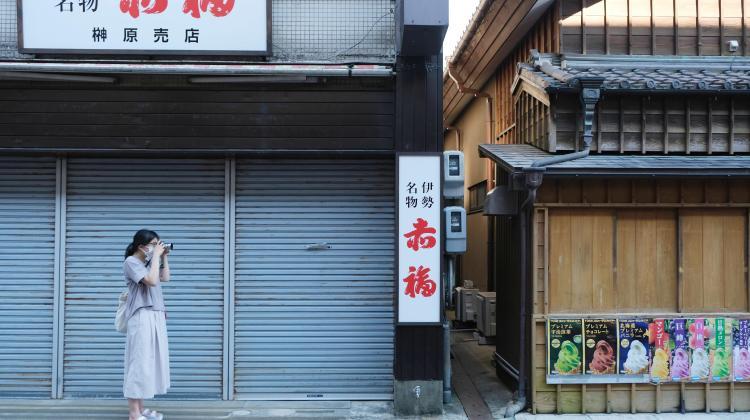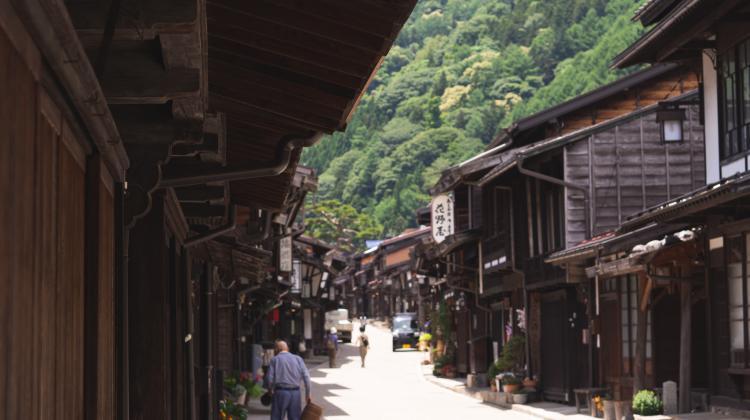Through a fellowship, Demi Fang documented her experience researching Japanese architecture and craftsmanship.
Originally written by Olivia Mintz for MIT School of Architecture and Planning
When Demi Fang SMBT '20 began her graduate work in Building Technology at the MIT School of Architecture and Planning, she had no expectation that her research would take her to Japan.
A doctoral candidate working with Professor Caitlin Mueller in the Digital Structures research group, Fang came across this opportunity by chance. As she was finishing up her master’s thesis on the structural mechanics of timber joinery in 2020, a colleague, Paul Mayencourt PhD ’19, invited Dylan Iwakuni, a carpenter specializing in traditional woodworking in Japan, to teach a workshop on joinery connections. Timber joinery is a traditional post-and-beam wood construction technique used to connect wood members without the use of metal fasteners. The wood is shaped so that the pieces fit together like a puzzle. This building method dates to 500 B.C.
"I wrote a paper based on my master’s thesis where I calculated the carbon savings from using joinery connections over steel connections to be somewhat negligible, which makes a lot of sense because the connections do not make up a large part of the building structure,” says Fang. “Those results led me to focus my doctoral studies on what kind of decisions in structural engineering are really impactful for carbon emissions at scale."
She and Iwakuni kept in contact, and Fang later received a summer fellowship in 2022 from the Japan Society for the Promotion of Science. Fang’s travel was also partially underwritten by the Curtis (1953) Fund which was established to enrich the learning experience and expand the horizons of MIT architecture students traveling for research, in addition to MITSI Japan. Iwakuni invited her to join him on a road trip across Japan to learn more about the country’s architecture and historic structures. While visiting Iwakuni’s work site for the summer, Fang was moved to write a narrative essay for Medium, an open publishing platform.
“I just wanted to document everything I was learning,” she says. “This was a really compelling story to share.”
During the trip, Fang met Takahiro Yoshino, the owner of the Chair Laboratory. Located in the northern foothills of Mount Fuji, the Chair Laboratory showcases a collection of chairs Yoshino has been given and preserved over the years. Yoshino, a devotee of woodworking and an internationally recognized maker himself, established a nonprofit organization, the Mount. Fuji Wood Culture Society, where he teaches traditional Japanese woodworking.
The 93-year-old Chair Laboratory building itself is considered a feat of structural reuse, as it was relocated from its original site and rebuilt at its current location.
“It was hands-on local craftsmanship and expertise that enabled the reuse of this building,” Fang says. “With professors Nathan Brown, Catherine De Wolf, and Caitlin Mueller, I recently published a review paper on the strategies that can be used to reduce emissions in the built environment. We had identified ‘structural reuse’ as one of the strategies, but this was my first time encountering a successful case study of this strategy, up-close and personal.”
Fang had long been interested in Japanese structural design and saw this road trip as an opportunity to experience it firsthand. Aside from seeing amazing feats of Japanese earthquake engineering, one of her favorite experiences was visiting open-air museums where Japanese houses are preserved in their original style.
You're totally immersed in a space where the tradition with wood and natural materials and nature is evident,” Fang says. “It helped me understand the spirit that motivated everyone to reuse that original house for the Chair Lab.”
Fang also met with master carpenter Toshikazu Takahashi and learned about his involvement in the Chair Laboratory. His extensive experience with reuse projects provided fruitful discussion of construction techniques as well as the obstacles that confront reuse projects, including assessments of structural integrity.
This September Fang attended CISBAT 2023 — an international conference on the built environment — in Switzerland, where she presented a technical analysis of her case study.
“I felt that my case study was a great fit for this conference, which just introduced the theme of ‘circular economy’ this year,” Fang says. “It was great to be a part of this community and to see the work that people in this field have been doing with reuse. It also gave me context academically of where my case study fits in with the rest of the discourse because it's a reminder of how we can't discount traditional craftsmanship and local expertise.” On this recent wave of international research on circular economy in buildings, Fang comments “I’m hopeful that it will enable more structural reuse to mitigate emissions from the built environment.”
Thanks to her travels, Fang has gained a greater appreciation for timber joinery and the perspective it can offer in modern construction.
“I think as long as the craft exists and as long as there are people who continue to value that craft enough to maintain interest in it, it's valuable to dive into these questions of how they can affect sustainability in construction,” Fang says.
Originally published on October 12, 2023 by the School of Architecture and Planning








